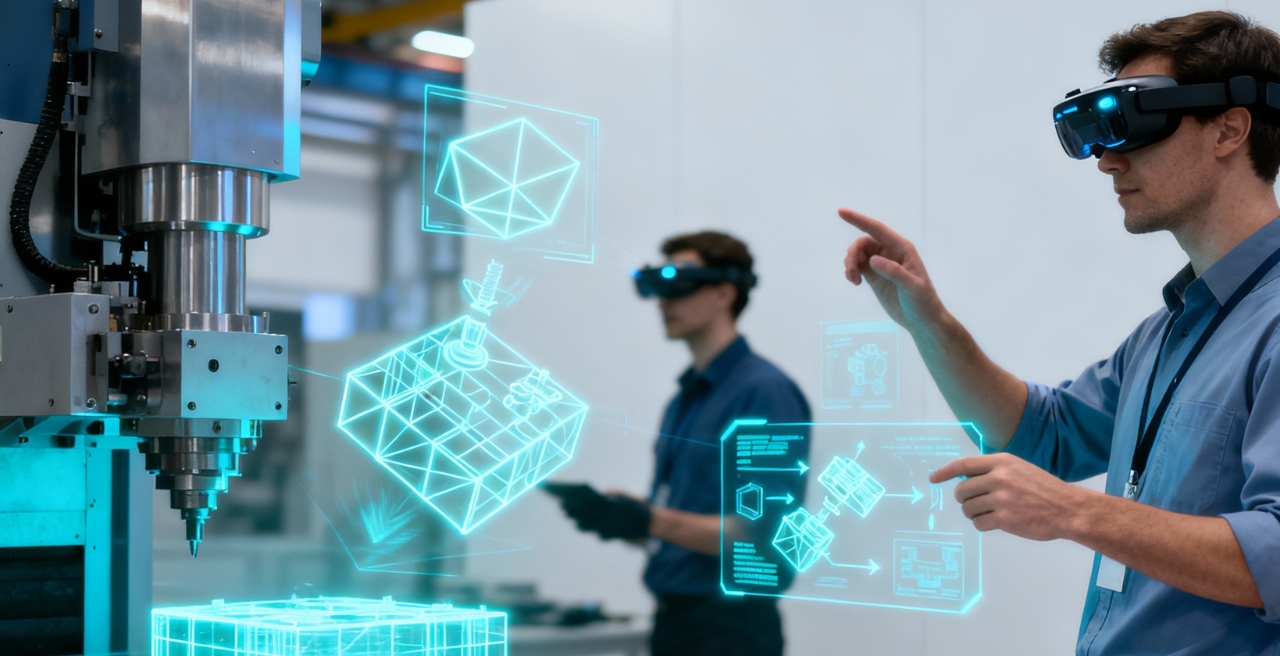Engineering is undergoing a major change as digital technologies reopen traditional workflows. In these innovations, the enhanced reality (AR) stands as a powerful environment that bridges the gap between the virtual model and the physical reality. From design visualization to assembly, training and maintenance, AR is revolutionizing how engineers and manufacturers are in the outlook of product growth and production.
AR in Design – Bringing 3D Models to Life
Design is no longer confined to a computer screen. With AR:
CAD models in real-world environments – Engineers can project designs into actual spaces to test form and fit.
Interactive 3D visualization – Complex details become clear, reduce misinterpretation.
Faster Prototype – Virtual test reduces the requirement of expensive physical prototypes.
Design teams can make smart and fast decisions by superimposing digital concepts in the real world.
AR in Assembly, Training, and Service
Beyond the design, AR is re -preparing how the assembly lines and the technical team work:
Guided assembly instructions – Overlays show workers the next step, cutting down errors.
Immersive training – Hands-on AR guidance improves retention and reduces learning time.
Smarter servicing – Technicians can imagine hidden components and reach relevant instructions.
Quality inspections – AR flags defects during checks, ensuring greater accuracy.
This hands-free, real-time guidance accelerates workflows and enhances productivity.
AR Meets IoT – Real-Time Insights
The integration of AR with IoT (Internet of Things) amplifies its potential:
- Engineers can directly view live operating data (temperature, performance, alert) on machines.
- AR dashboard overlays analytics in reference, reducing dependence on different screens.
- Predictive maintenance becomes easier by identifying issues, before they proceed.
This contextual awareness empowers faster, more accurate decisions on the shop floor.
Broader Industry Trends in AR
The adoption of AR in engineering is rapidly expanding:
Early adopters – Aerospace, automotive, and manufacturing industries already leverage AR.
Training Efficiency – Studies show that AR can cut training time up to 30%.
Cost reduction – Companies report more than 20% operational savings with AR integration.
Industry 4.0 Alignment – AR plays an important role in making factories smarter and more connected.
Challenges remain in hardware comfort, scalability and adoption, but long -term benefits are undisputed.
Real-World Perspectives on AR
Industry professionals highlight AR’s practicality:
- Imagination of 3D models on the site can reduce costs, reduce costs and build time.
- AR glass with step-by-step guidance simplifies complex technical functions.
These insights reflect AR’s growing role as an essential engineering tool.
The Road Ahead – Unlocking AR’s Potential
To maximize AR’s impact in engineering and manufacturing, organizations should:
- Integrate AR early into design and planning.
- Combine AR with IoT for real-time insights.
- Prioritize user experience for intuitive and ergonomic solutions.
- Measure impact to prove ROI and efficiency gains.
- Scale gradually, starting with assembly, inspection, or service applications.
Conclusion
The future of engineering is immersive, intelligent and connected. The enhanced reality is redefining the design, assembly and maintenance, reducing the gap between the physical and digital world. As combined with AR IOT and AI, it will continue to unlock efficiency, accuracy and innovation in industries.
















